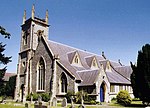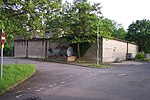Maiden Erlegh School
Maiden Erlegh School is a coeducational secondary school and sixth form located in Earley (near Reading) in Berkshire, England.It was established in 1962 as a Comprehensive school secondary school to serve the families of Wokingham. Today it is the lead school of Maiden Erlegh Trust, having converted to an academy in 2011. It has capacity for 1,788 students but currently has 1,824 students on roll, over 400 of whom are in its sixth form. At the school's last Ofsted inspection (February 2020), it was named 'Outstanding' in all categories.In April 2010 Maiden Erlegh celebrated 25 years of German Exchanges with Gymnasium Schloss Overhagen.Maiden Erlegh School collaborates with local artists through its Community Arts programme, and hosts the Peacock Gallery which hosts regular exhibitions.Maiden Erlegh School was ranked as the best non-selective school in Berkshire in The Real Schools Guide 2019.
Excerpt from the Wikipedia article Maiden Erlegh School (License: CC BY-SA 3.0, Authors).Maiden Erlegh School
The Parade,
Geographical coordinates (GPS) Address Phone number Website External links Nearby Places Show on map
Geographical coordinates (GPS)
| Latitude | Longitude |
|---|---|
| N 51.43748 ° | E -0.92454 ° |
Address
Maiden Erlegh School
The Parade
RG6 7HS , Lower Earley
England, United Kingdom
Open on Google Maps








